Stable isotope analyses reveal unique trophic role of reef manta rays (Mobula alfredi) at a remote coral reef
September 2019
Lauren R. Peel, Ryan Daly, Clare A. Keating Daly, Guy M. W. Stevens, Shaun P. Collin & Mark G. Meekan
Keywords: Stable Isotopes • Elasmobranch • Mobulid • Foraging • Nutrient Transport
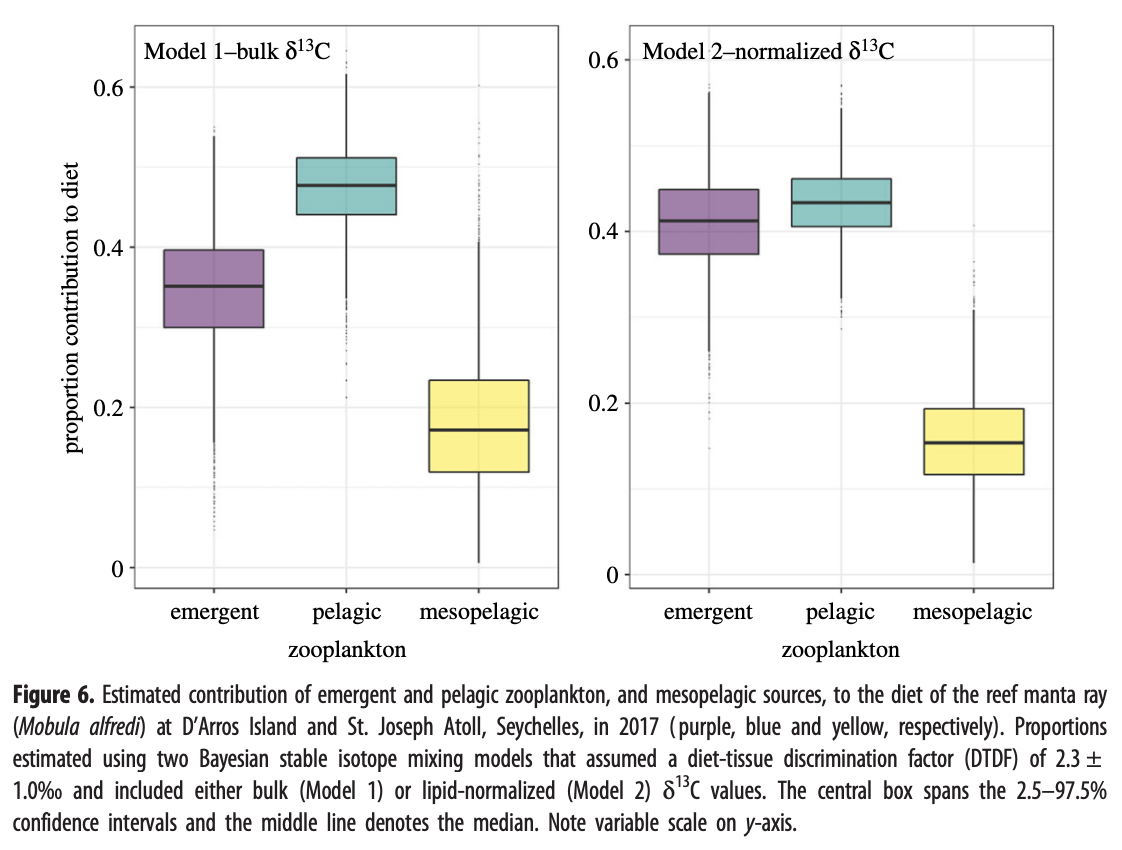
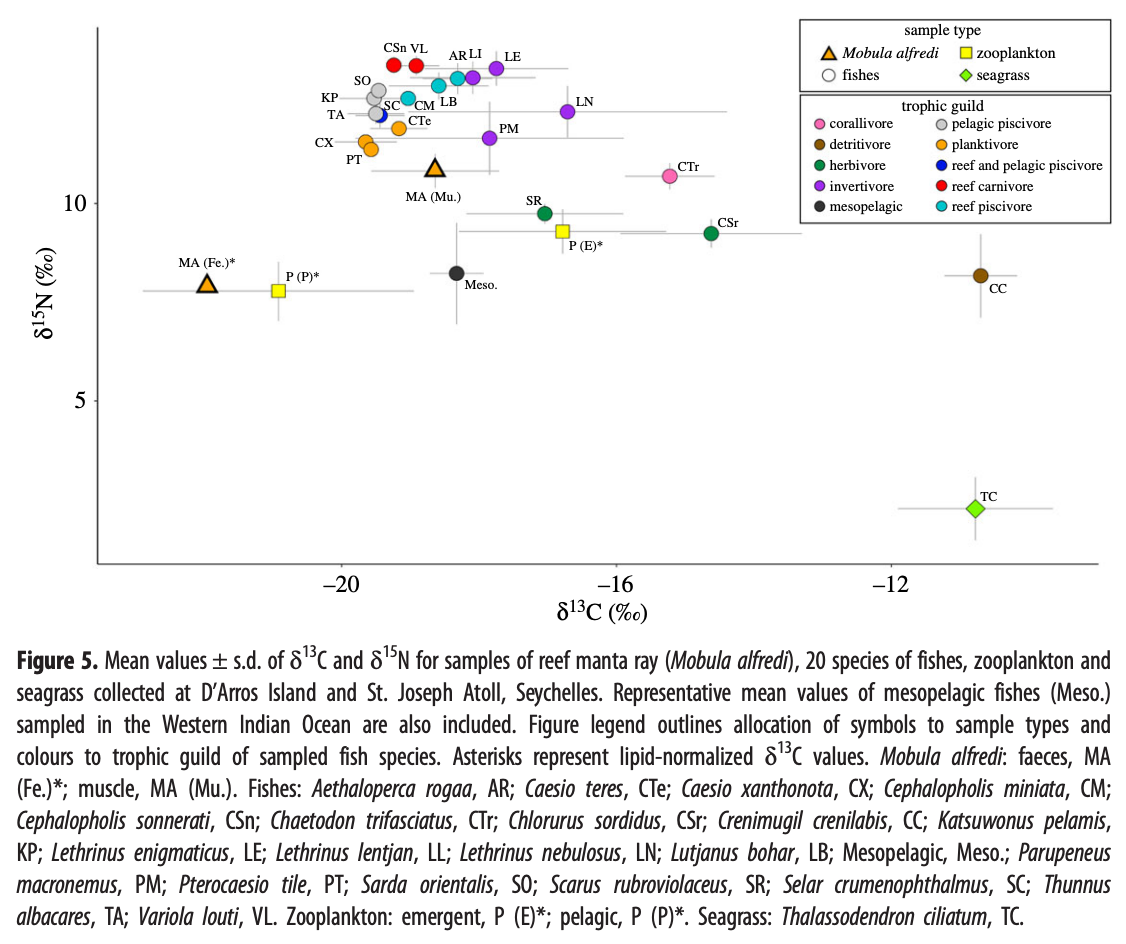
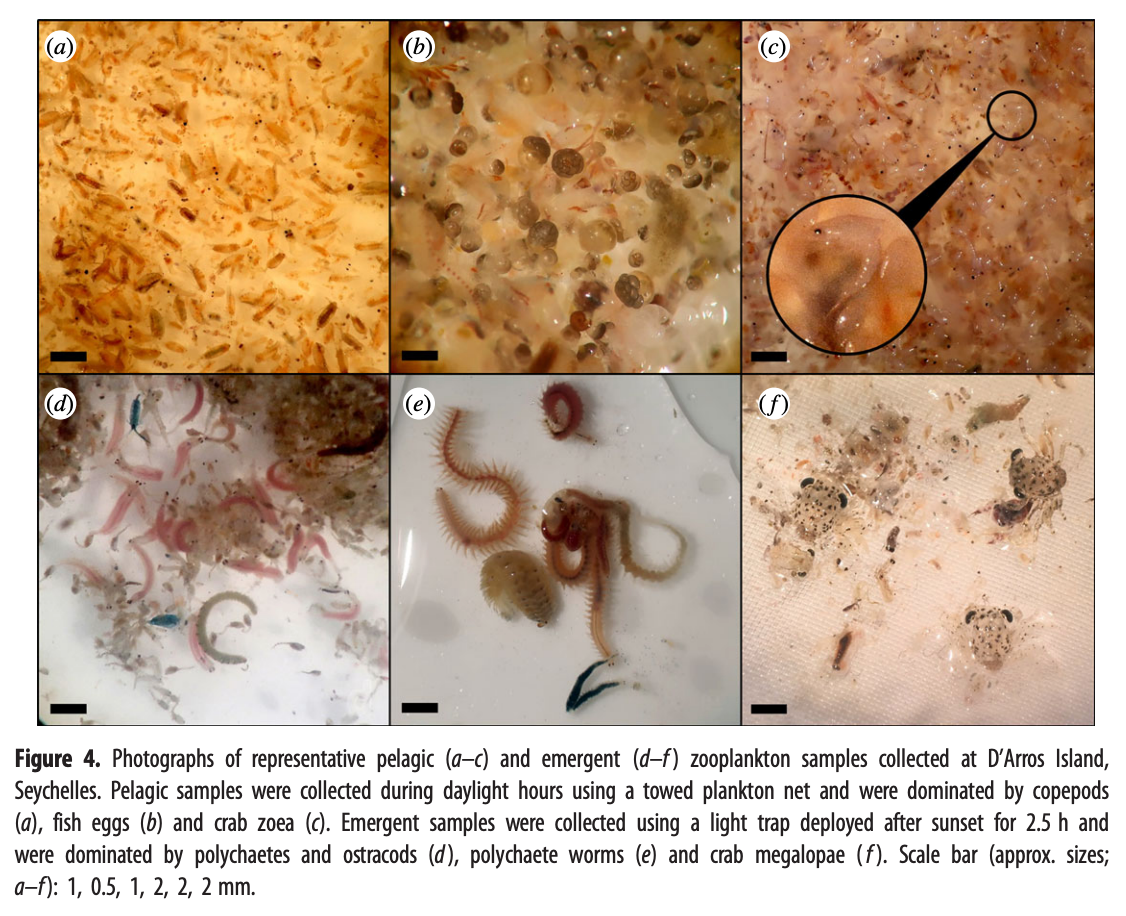
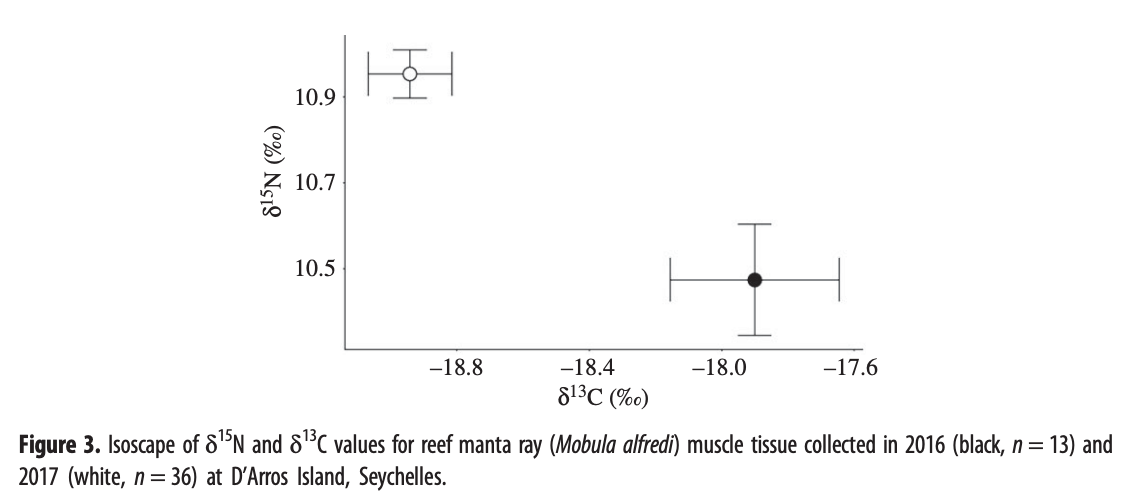
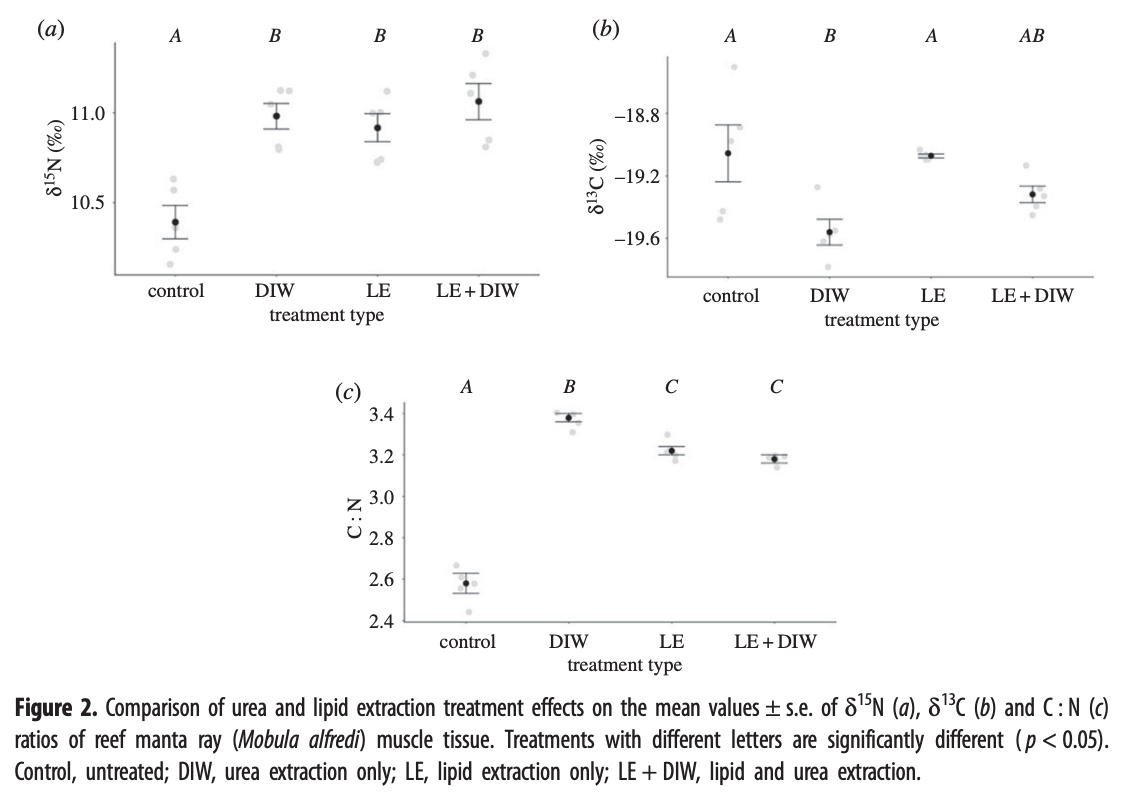
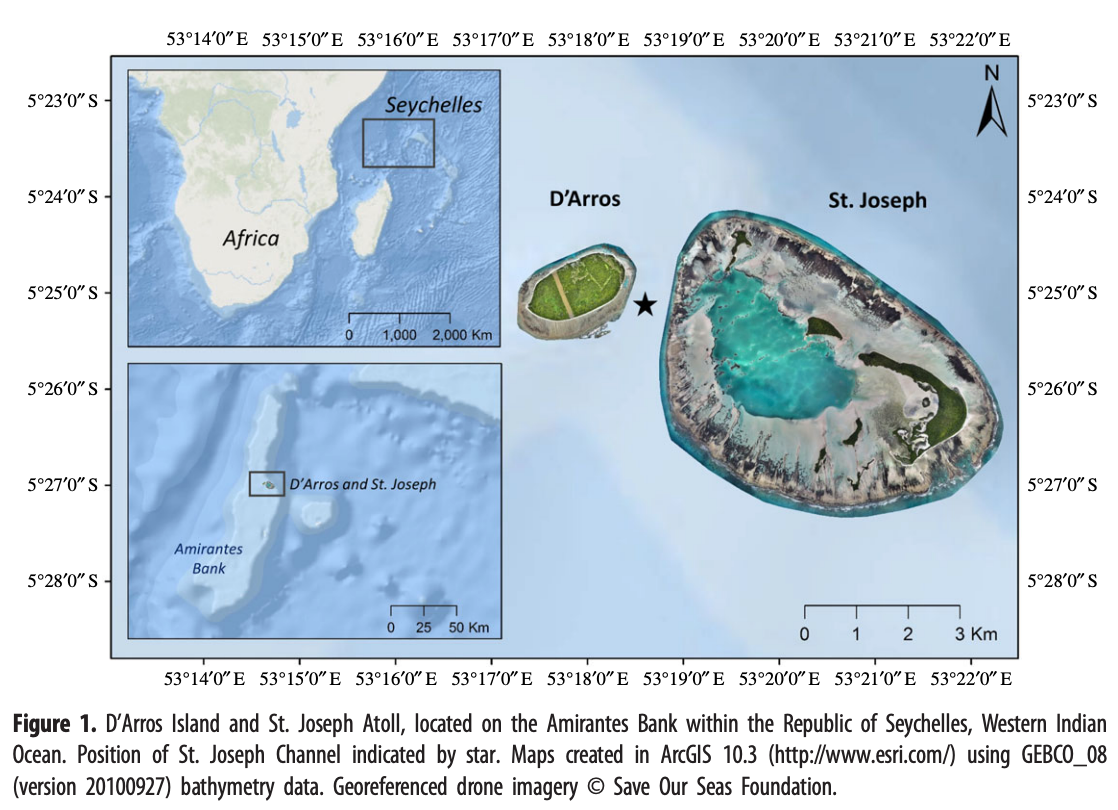
Summary: Stable isotope analysis was used to study the feeding ecology of reef manta rays at a coral reef in the Western Indian Ocean. The analysis showed that all individuals occupy the same trophic niche and have a unique ecological niche compared to other planktivorous fish species in the area. Pelagic zooplankton, emergent zooplankton, and mesopelagic prey items make up the manta rays' diet. These findings suggest that the manta rays play an important role in nutrient cycling and supply around and to the nearby coral reefs.
Abstract
“Stable isotope analyses provide the means to examine the trophic role of animals in complex food webs. Here, we used stable isotope analyses to characterize the feeding ecology of reef manta rays (Mobula alfredi) at a remote coral reef in the Western Indian Ocean. Muscle samples of M. alfredi were collected from D'Arros Island and St. Joseph Atoll, Republic of Seychelles, in November 2016 and 2017. Prior to analysis, lipid and urea extraction procedures were tested on freeze-dried muscle tissue in order to standardize sample treatment protocols for M. alfredi. The lipid extraction procedure was effective at removing both lipids and urea from samples and should be used in future studies of the trophic ecology of this species. The isotopic signatures of nitrogen (δ15N) and carbon (δ13C) for M. alfredi differed by year, but did not vary by sex or life stage, suggesting that all individuals occupy the same trophic niche at this coral reef. Furthermore, the isotopic signatures for M. alfredi differed to those for co-occurring planktivorous fish species also sampled at D'Arros Island and St. Joseph Atoll, suggesting that the ecological niche of M. alfredi is unique. Pelagic zooplankton were the main contributor (45%) to the diet of M. alfredi, combined with emergent zooplankton (38%) and mesopelagic prey items (17%). Given the extent of movement that would be required to undertake this foraging strategy, individual M. alfredi are implicated as important vectors of nutrient supply around and to the coral reefs surrounding D'Arros Island and St. Joseph Atoll, particularly where substantial site fidelity is displayed by these large elasmobranchs.”
Author Affiliations
School of Biological Sciences, The Oceans Graduate School, The University of Western Australia
The Australian Institute of Marine Science
Save Our Seas Foundation – D’Arros Research Centre (SOSF-DRC)
The Manta Trust
South African Institute for Aquatic Biodiversity (SAIAB)
School of Life Sciences, La Trobe University
Funded by
Save Our Seas Foundation
The Manta Trust
Australian Institute of Marine Science
Robson & Robertson Award from The University of Western Australia

